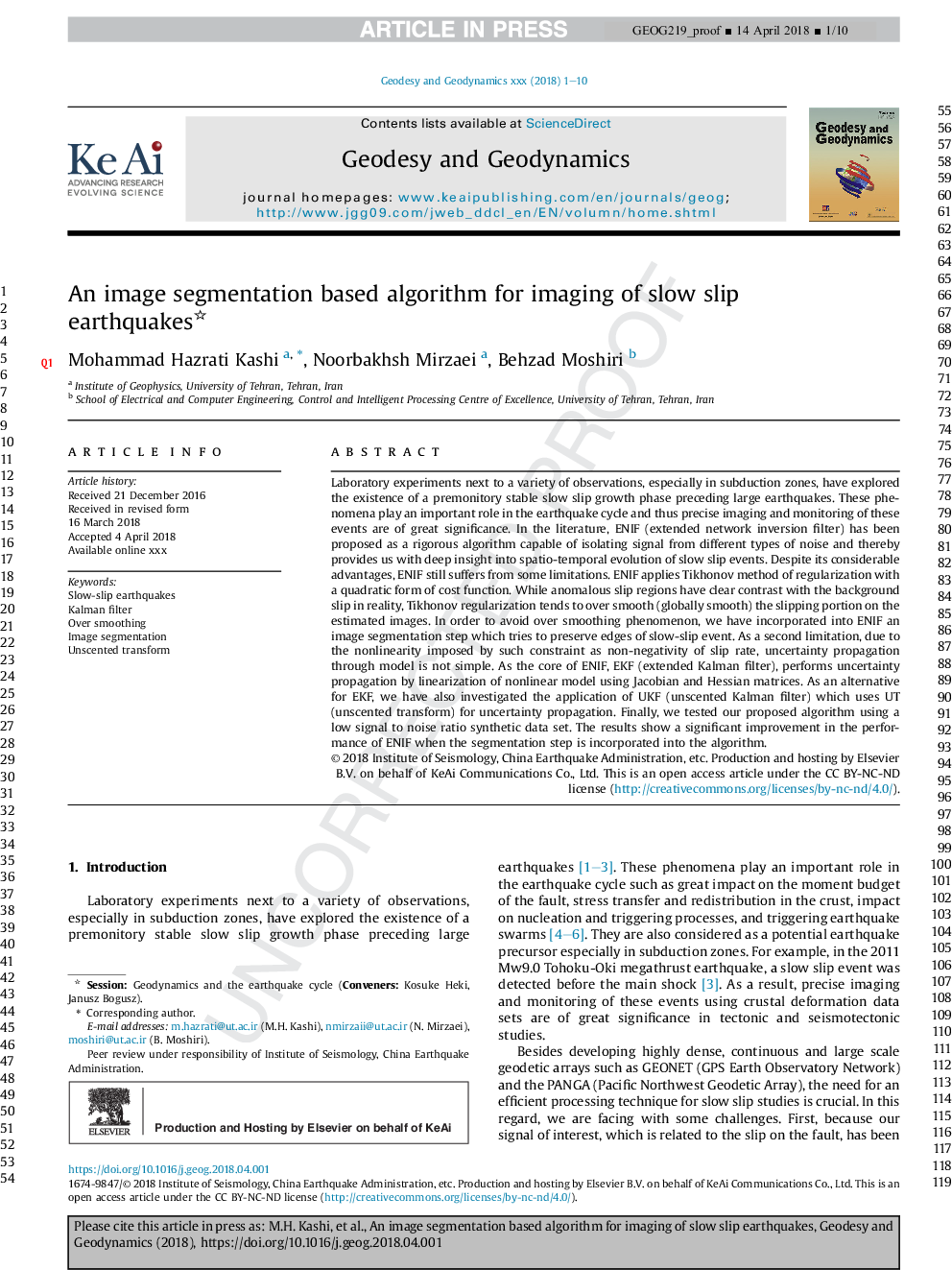| Article ID | Journal | Published Year | Pages | File Type |
|---|---|---|---|---|
| 8907856 | Geodesy and Geodynamics | 2018 | 10 Pages |
Abstract
Laboratory experiments next to a variety of observations, especially in subduction zones, have explored the existence of a premonitory stable slow slip growth phase preceding large earthquakes. These phenomena play an important role in the earthquake cycle and thus precise imaging and monitoring of these events are of great significance. In the literature, ENIF (extended network inversion filter) has been proposed as a rigorous algorithm capable of isolating signal from different types of noise and thereby provides us with deep insight into spatio-temporal evolution of slow slip events. Despite its considerable advantages, ENIF still suffers from some limitations. ENIF applies Tikhonov method of regularization with a quadratic form of cost function. While anomalous slip regions have clear contrast with the background slip in reality, Tikhonov regularization tends to over smooth (globally smooth) the slipping portion on the estimated images. In order to avoid over smoothing phenomenon, we have incorporated into ENIF an image segmentation step which tries to preserve edges of slow-slip event. As a second limitation, due to the nonlinearity imposed by such constraint as non-negativity of slip rate, uncertainty propagation through model is not simple. As the core of ENIF, EKF (extended Kalman filter), performs uncertainty propagation by linearization of nonlinear model using Jacobian and Hessian matrices. As an alternative for EKF, we have also investigated the application of UKF (unscented Kalman filter) which uses UT (unscented transform) for uncertainty propagation. Finally, we tested our proposed algorithm using a low signal to noise ratio synthetic data set. The results show a significant improvement in the performance of ENIF when the segmentation step is incorporated into the algorithm.
Related Topics
Physical Sciences and Engineering
Earth and Planetary Sciences
Earth-Surface Processes
Authors
Mohammad Hazrati Kashi, Noorbakhsh Mirzaei, Behzad Moshiri,
